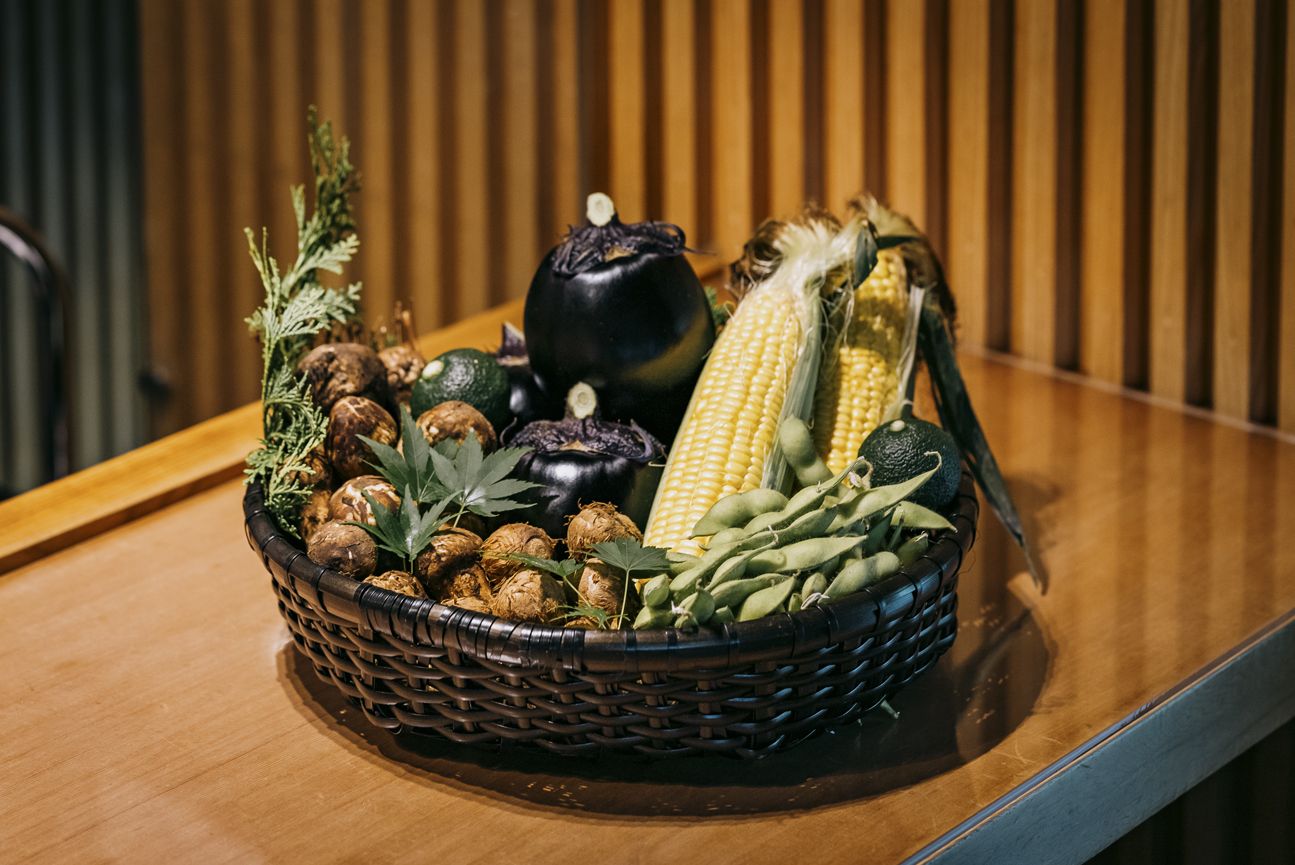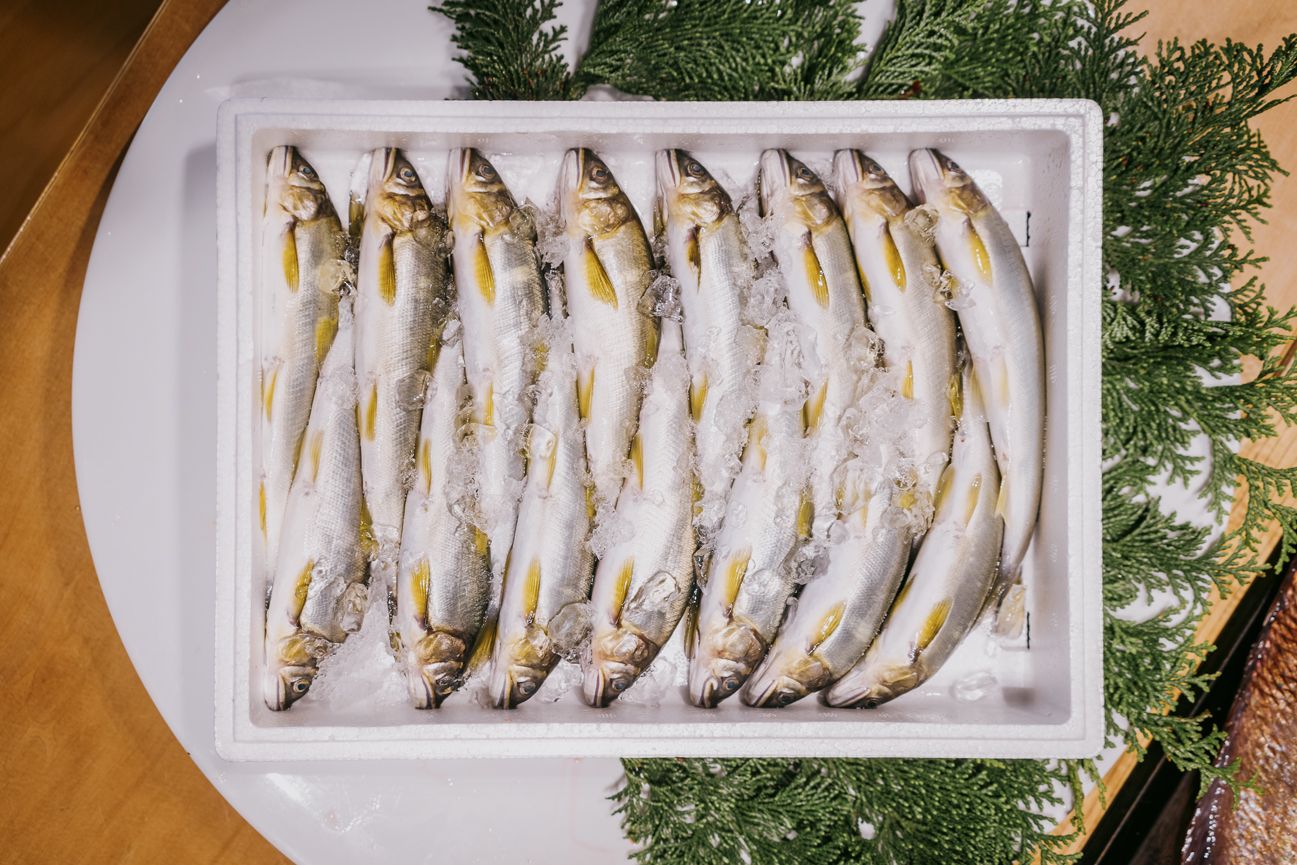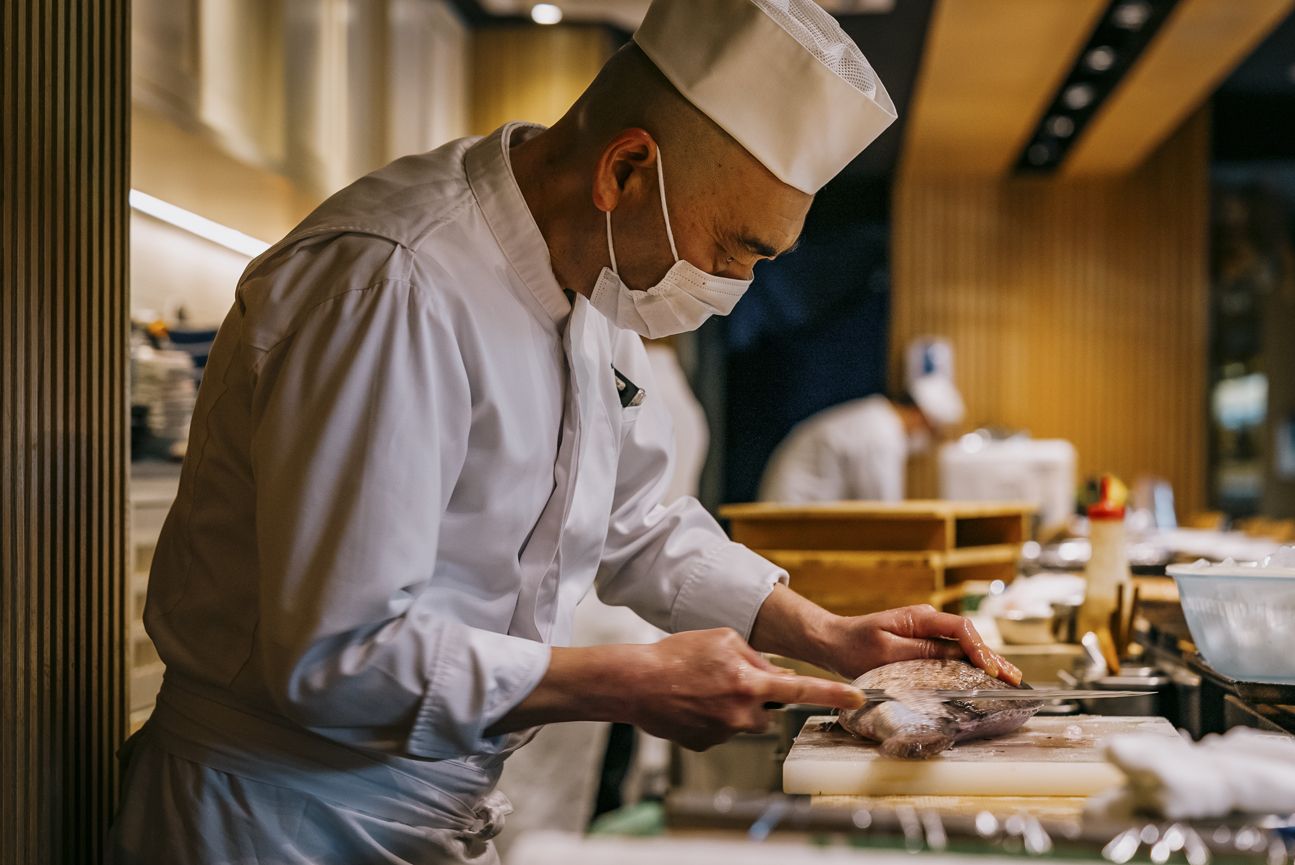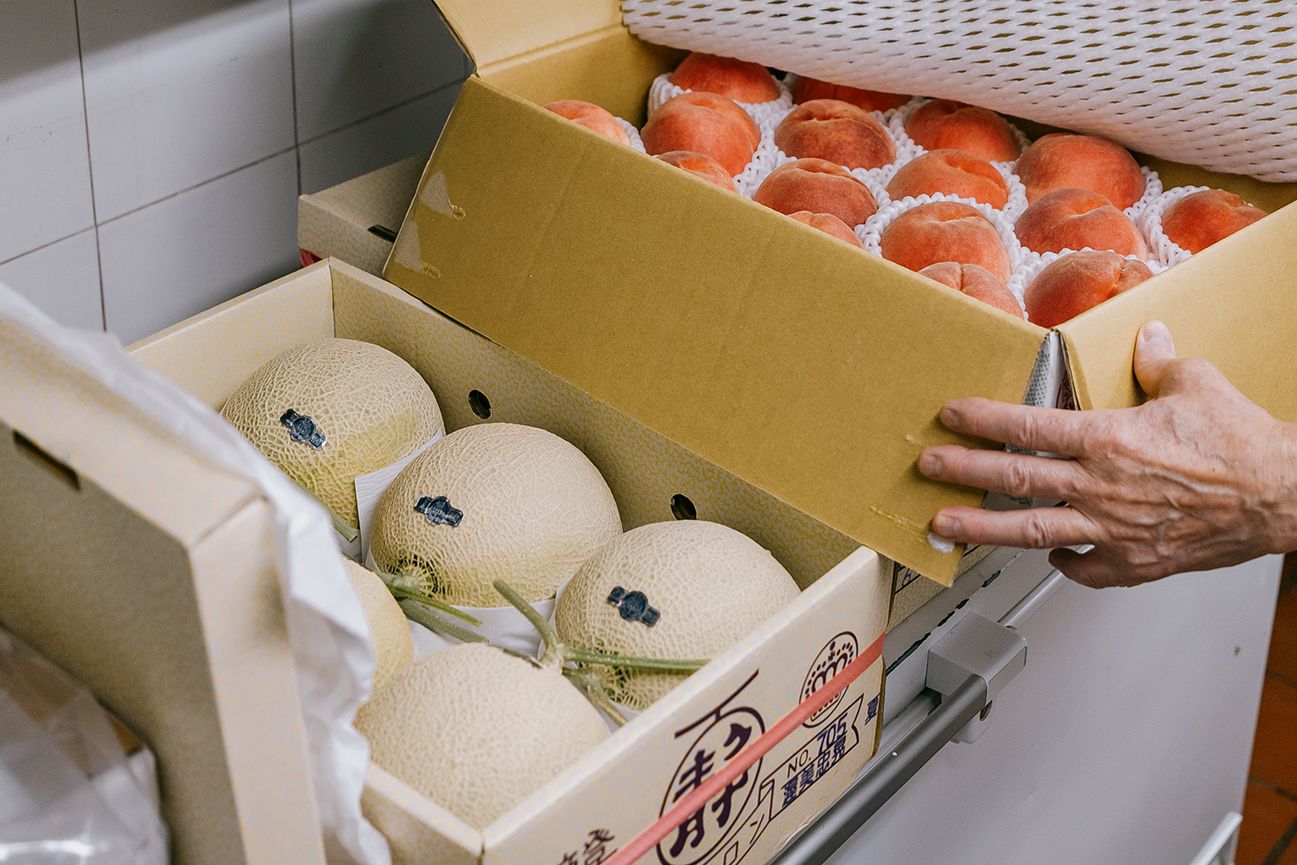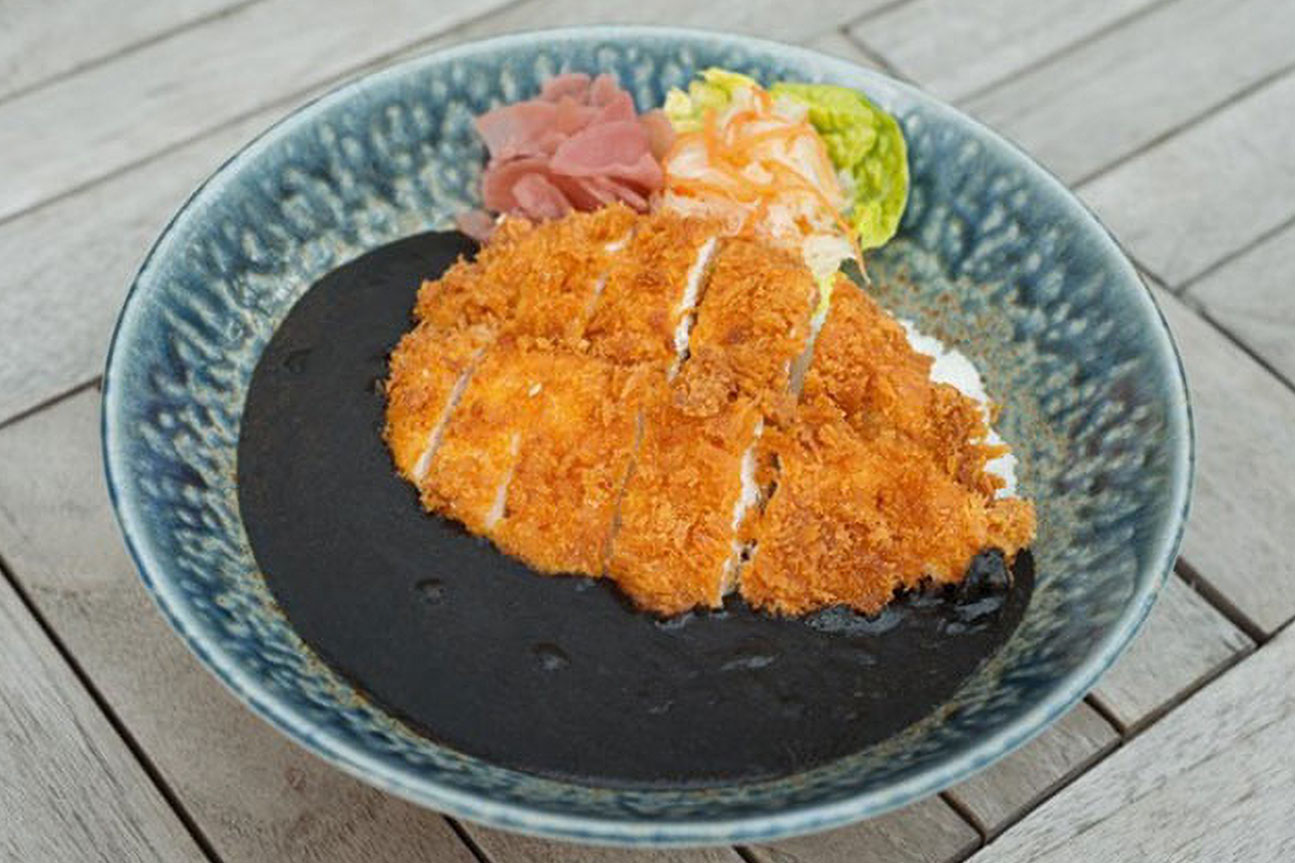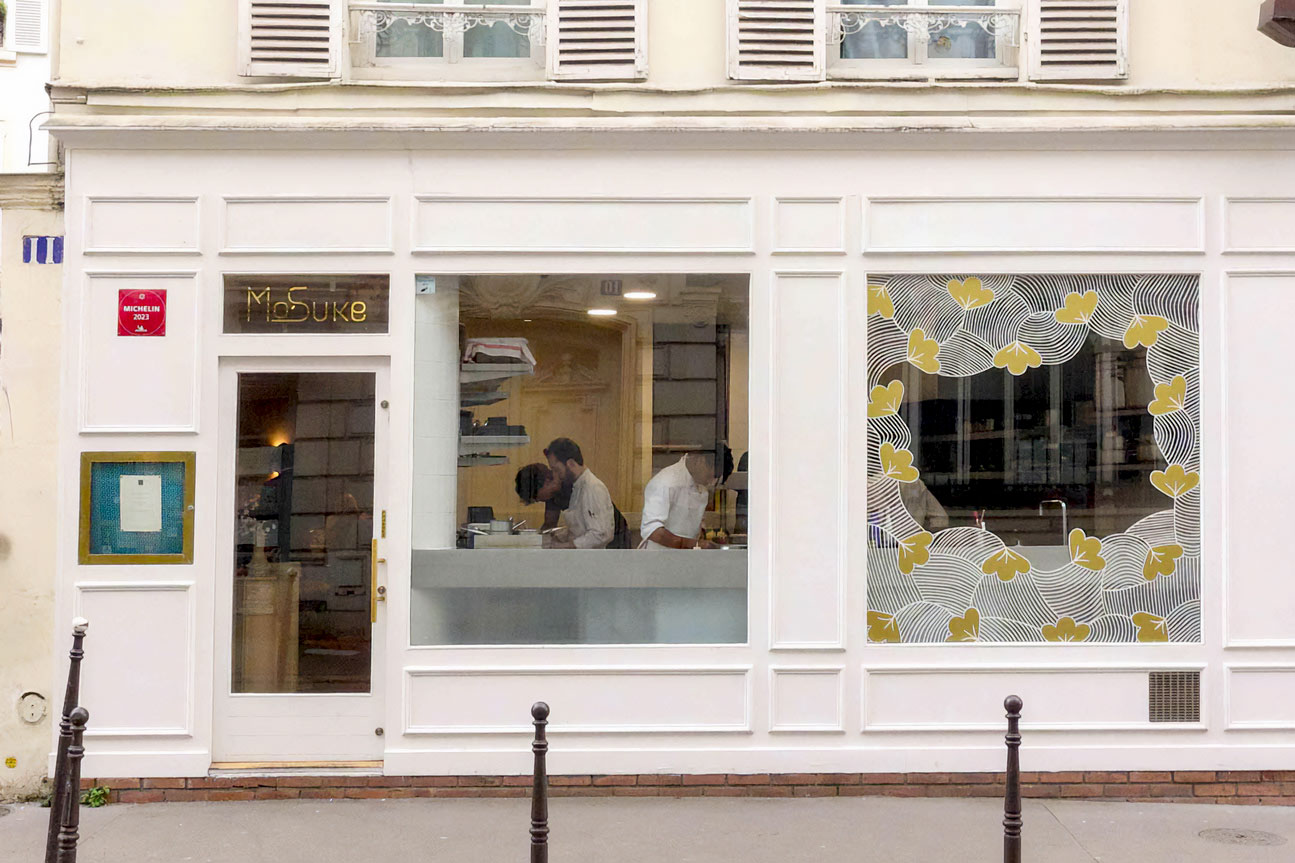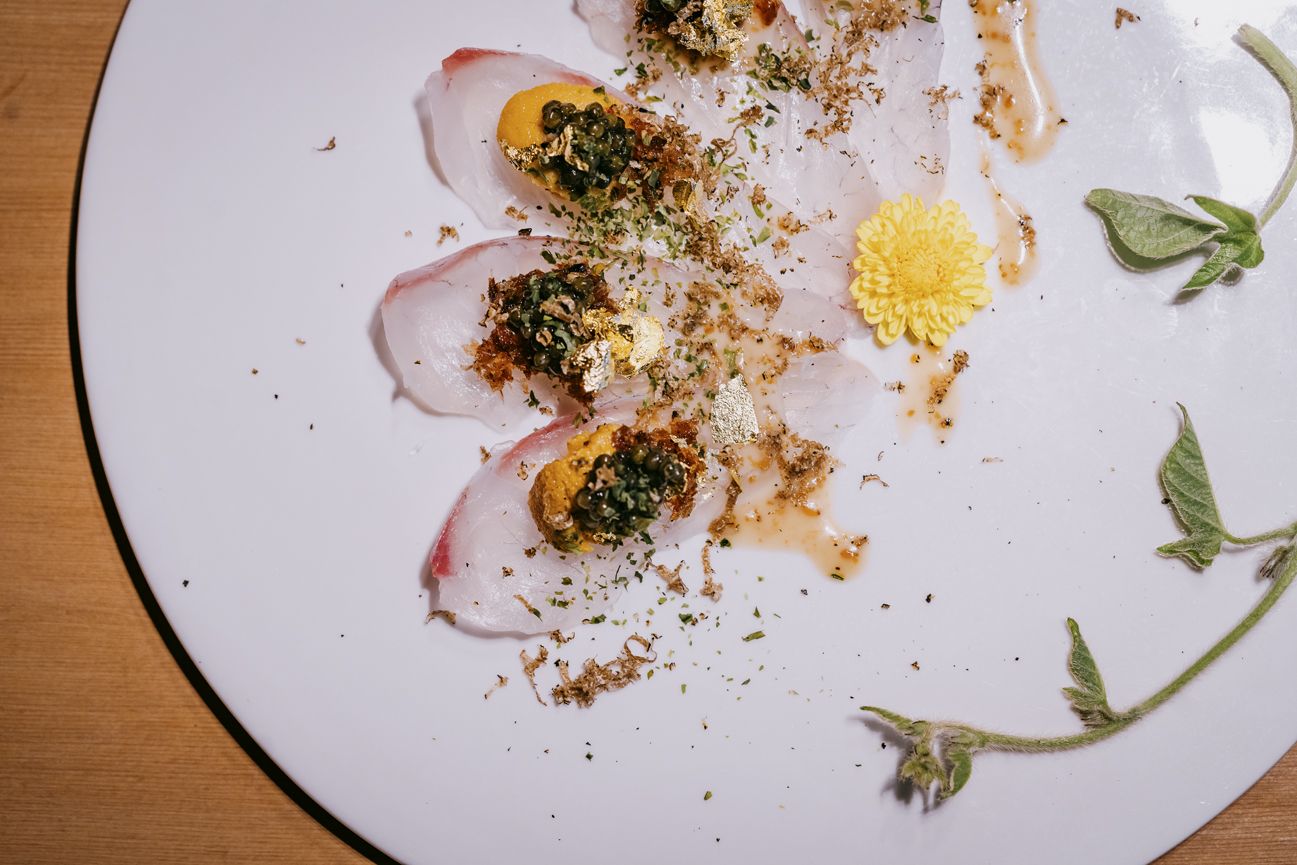
Savoring the seasons of Japan without time lag at the famous restaurant of the top sushi chef in Singapore
Many of the locals living in Singapore, the land of perpetual summer, strongly crave Japan for its wealth of seasonal changes. Japanese food using ingredients of Japan nurtured in each season is familiar in wide-ranging genres from fast-food to high-class sushi and Kaiseki course meals, and that choice expands increasingly.
For the people of Singapore, Japan is the most popular travel destination. During the two years when it was not possible to visit due to the COVID pandemic, instead, the more high-class the Japanese restaurant, the harder it was to make a reservation, as the wealthy classes were not prepared to miss out on the food. The high-class Japanese restaurants and sushi restaurants brought by the skills of Japanese chefs were much talked about as they continued to open, and despite the price of around 500 dollars (approx. 50,000 yen) for a course menu for one, they were fully reserved for several months to come.
Although most head chefs of those high-class sushi restaurants and Kaiseki course restaurants are Japanese, the owner-chef of “Tatsuya”, a popular restaurant located inside the historic 5-star hotel Goodwood Park Hotel, is Mr. Ronnie Chia, a true Singaporean. Since its opening in 1998, “Tatsuya” is arguably the restaurant fulfilling the role of leading the new sushi culture in Singapore.
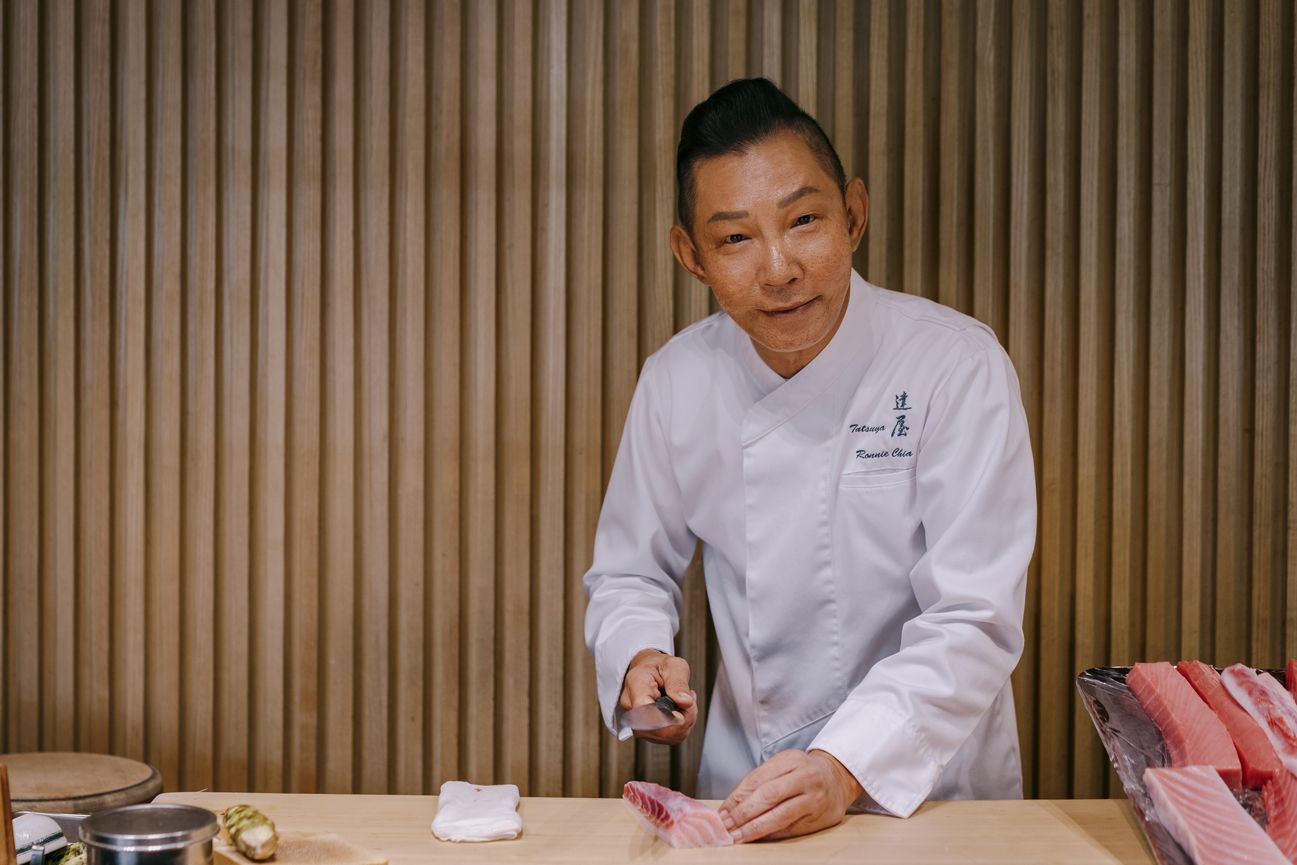
Mr. Ronnie Chia, brimming with the spirit of fine care and hospitality. There are many regular customers who visit the restaurant to meet with him.
Ronnie was just 15 years old when he started on the path of sushi. He says that his life was decided after encountering Yoshio Nogawa whom he calls “Uncle” with feelings of closeness and affection. Since the sushi restaurant “Nogawa” opened in 1978, Mr. Nogawa nurtured not just young Japanese but also local sushi chefs as the “father of sushi” in Singapore. Undergoing much training under the strict, yet caring Mr. Nogawa, and after 43 years, Ronnie has wholeheartedly reached the pinnacle of the profession.
Speaking fluent Japanese, and drawing people with his open and friendly personality, Ronnie is now the operator of “Tatsuya” along with another restaurant “Kappo Kaji”, and leads a large team of 35 people.
“The most important thing of all is the heart of ‘Omotenashi (Japanese-style hospitality)’. I have always maintained that feeling.” Omotenashi is a method of service that has grown up traditionally in Japan. For Ronnie, the secret of Omotenashi is linked to the pursuit of uncompromised, premium ingredients.
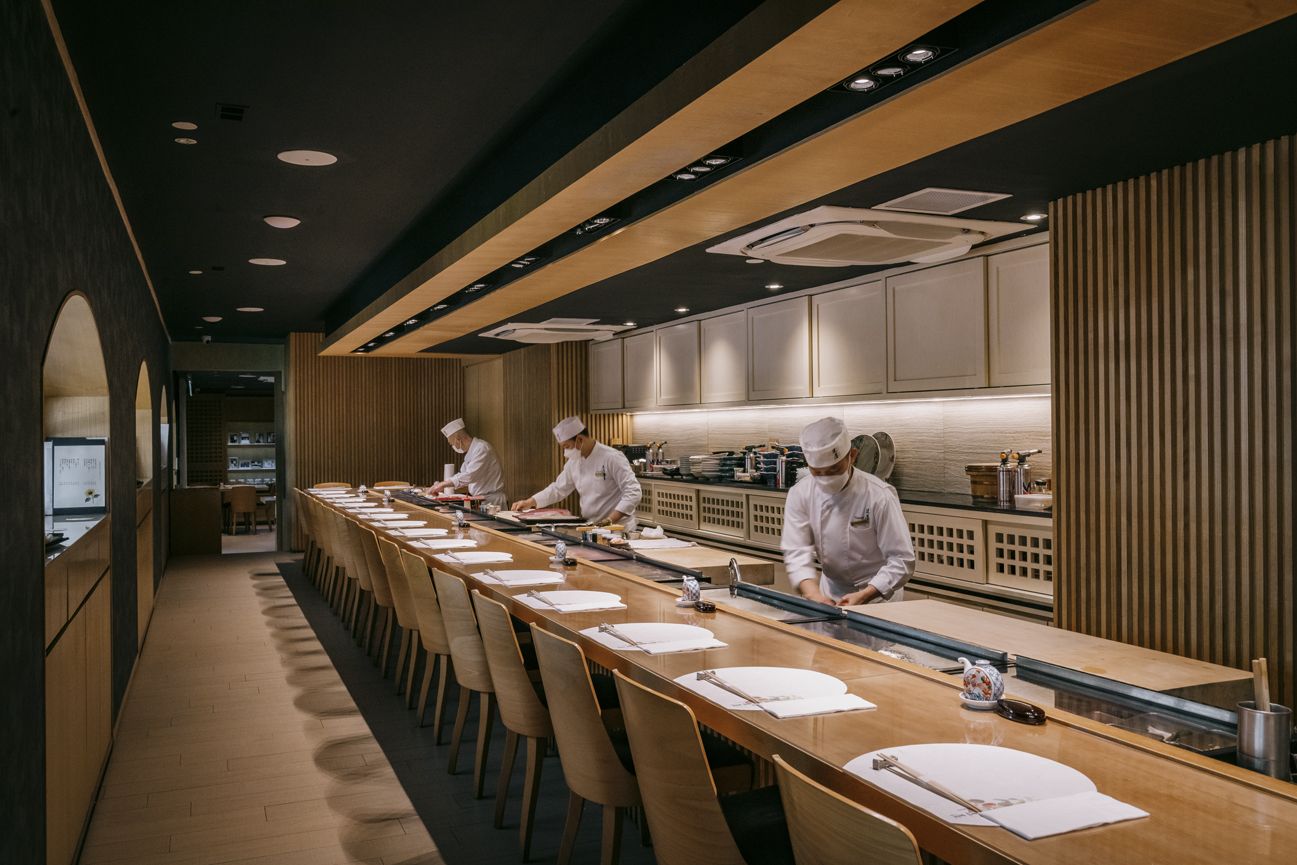
The long counter seating 24 people. The skilled chefs serve the customers at each of their stations.
At “Tatsuya”, ingredients are flown in from Toyosu Market, Japan twice a week. The premium-quality seasonal ingredients are sent by wholesalers with whom he has done business for many years. Ronnie frequently visits Japan. Recently he came to Japan after a break of two years, and during his almost 2-month stay, says he often passed by Toyosu Market. On the morning of the photo shooting, ingredients flown from Toyosu had just been carried into the restaurant. These ingredients are served to customers in the shortest time of just 10 hours from leaving Japan.
When I was shown the ingredients that had just arrived, I was astonished at their sheer variety. From seafood varieties such as seasonal fish to vegetables and fruits, almost all of the ingredients served at the restaurant are Japan-produced. The production locations are varied, from Hokkaido to Kyushu and Okinawa. Their superb freshness is enough to make you gasp; the shellfish when taken out of their box blow out water, and the fish bodies glisten. Diverse seasonal ingredients nurtured in each season are an essential element in Japanese cuisine. In addition to giving a feel of the coming of the season through the five senses, ingredients have their highest nutritional value when in season, and, above all, are at their most delicious. In Singapore, without seasons, might seasonality be treasured even more? Even the wealthy classes, who know the delicious cuisine of the world and are particular about what they eat, are smitten by Japanese seasonal ingredients.
Ronnie, with his full knowledge of Japan-produced ingredients and with partners in Japan bound by strong trust, he is able to take stock of numerous premium-quality ingredients in season in Japan in the shortest of time. The chefs work on preparing fish at each of their stations along the long counter.
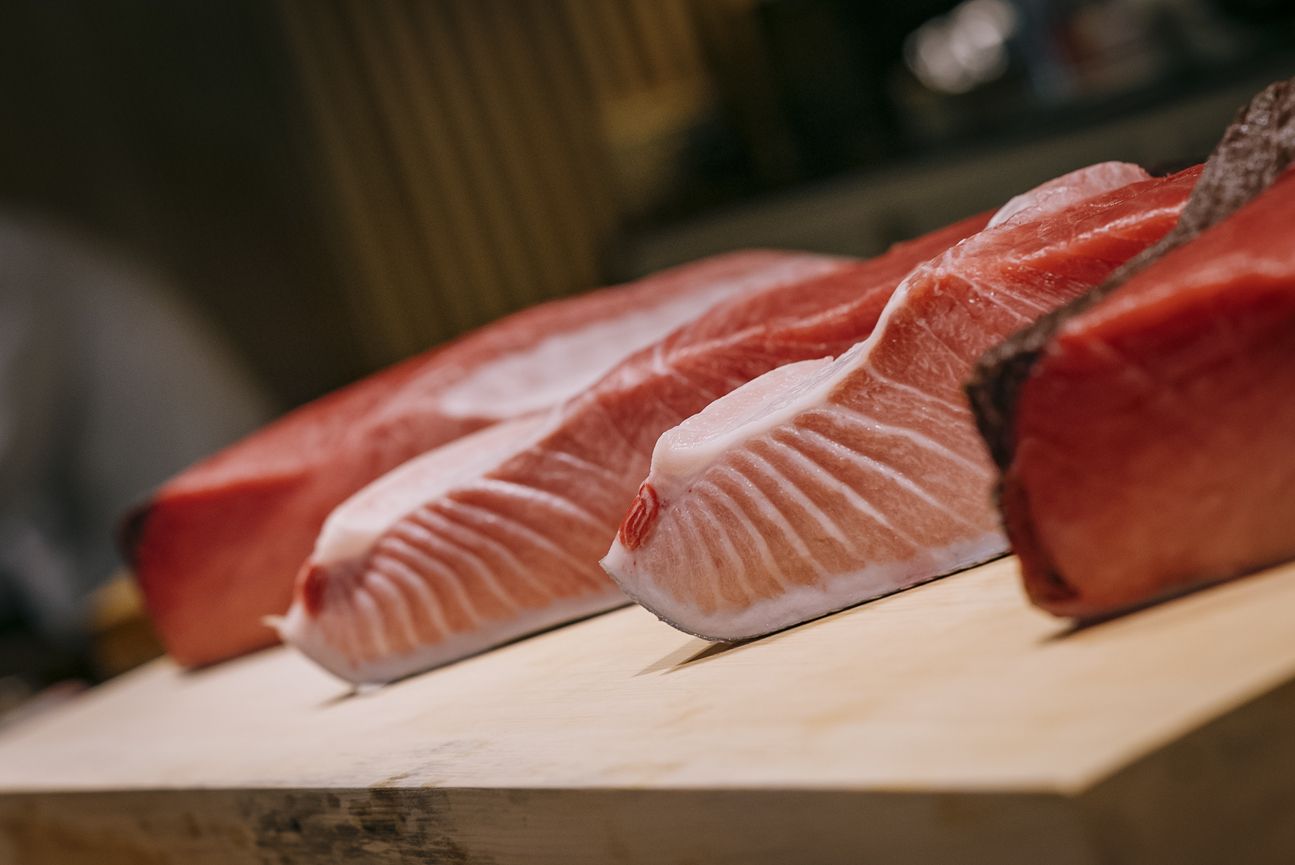
As much as 20kg of tuna is delivered every time. Most comes from Aomori Prefecture, but on this day it has come from Nagasaki.
Of all the premium quality ingredients, the vivid color and gradation of the large sliced tuna is so spectacular it takes your breath away. “Today’s tuna is from Nagasaki”, chef Mr. Hashimoto tells me. His knife handling, separating out each part, is truly beautiful. You can also sense the love of the ingredients in the way that Mr. Sasaki, beside him, works stripping the skin carefully off squid. Mr. Sasaki is a great veteran, having worked as a sushi chef in Singapore for around half of his life - 27 years. Under Ronnie’s leadership, the quality of “Tatsuya”’s cuisine is supported by his skillful chefs.
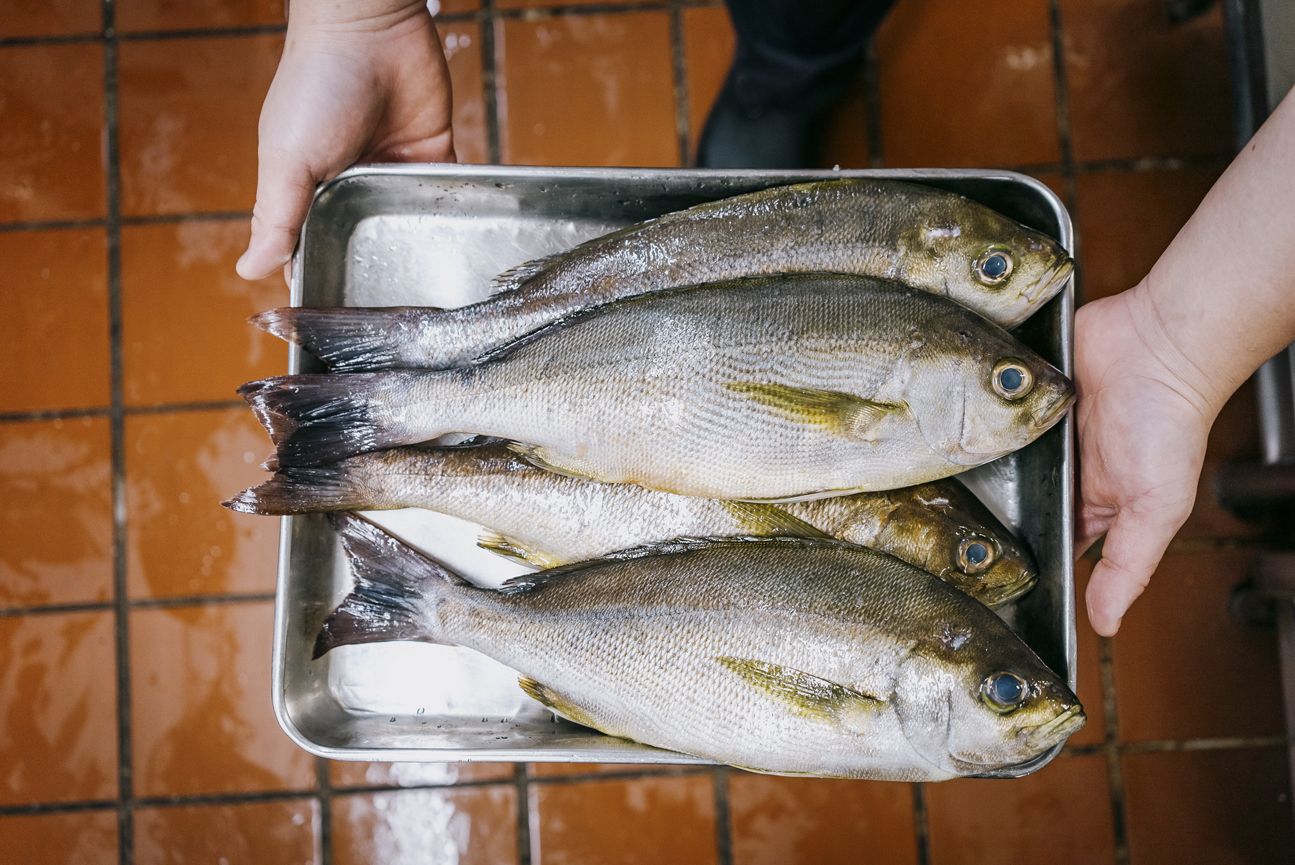
Grunt, fish so fresh you would never believe they had been flown in.
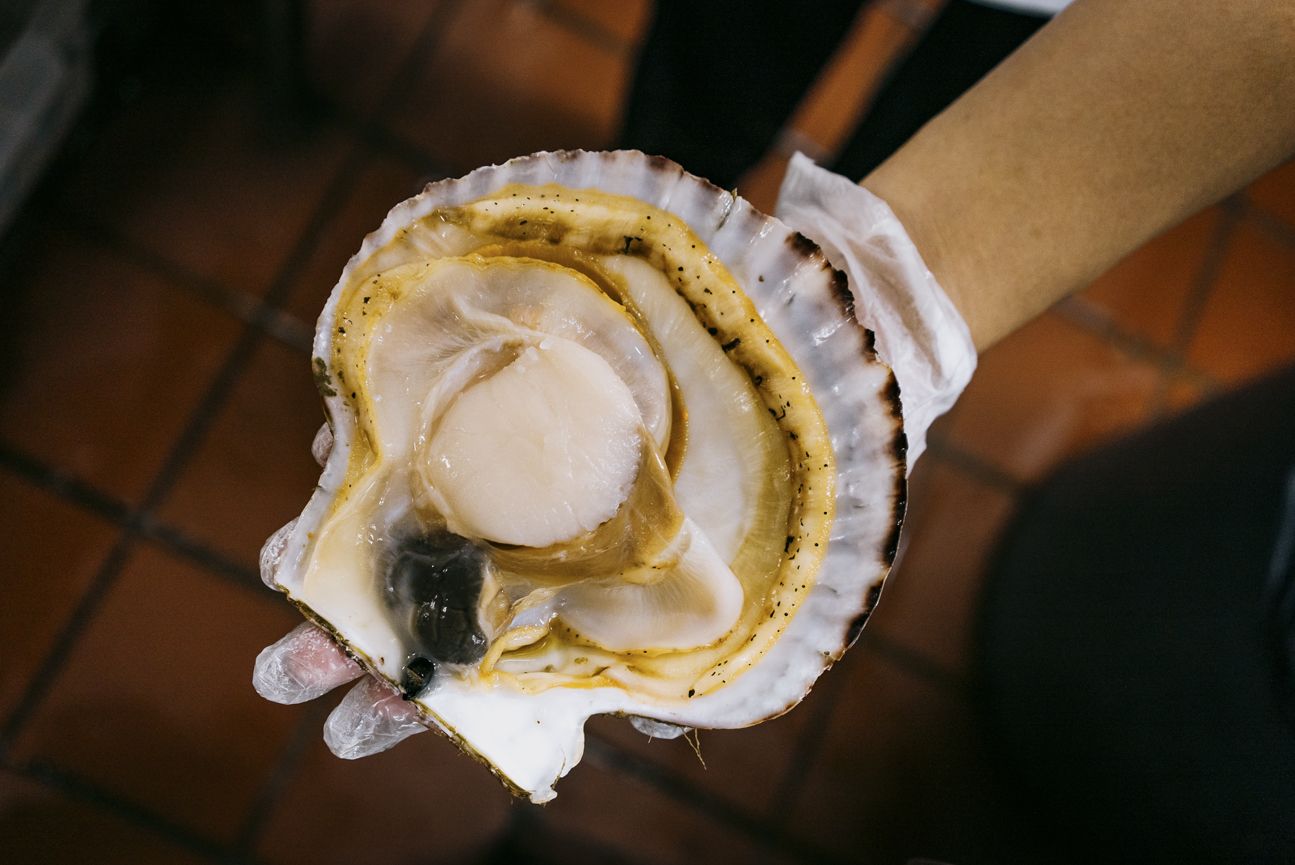
Rich variety of shellfish, including large-sized scallops.
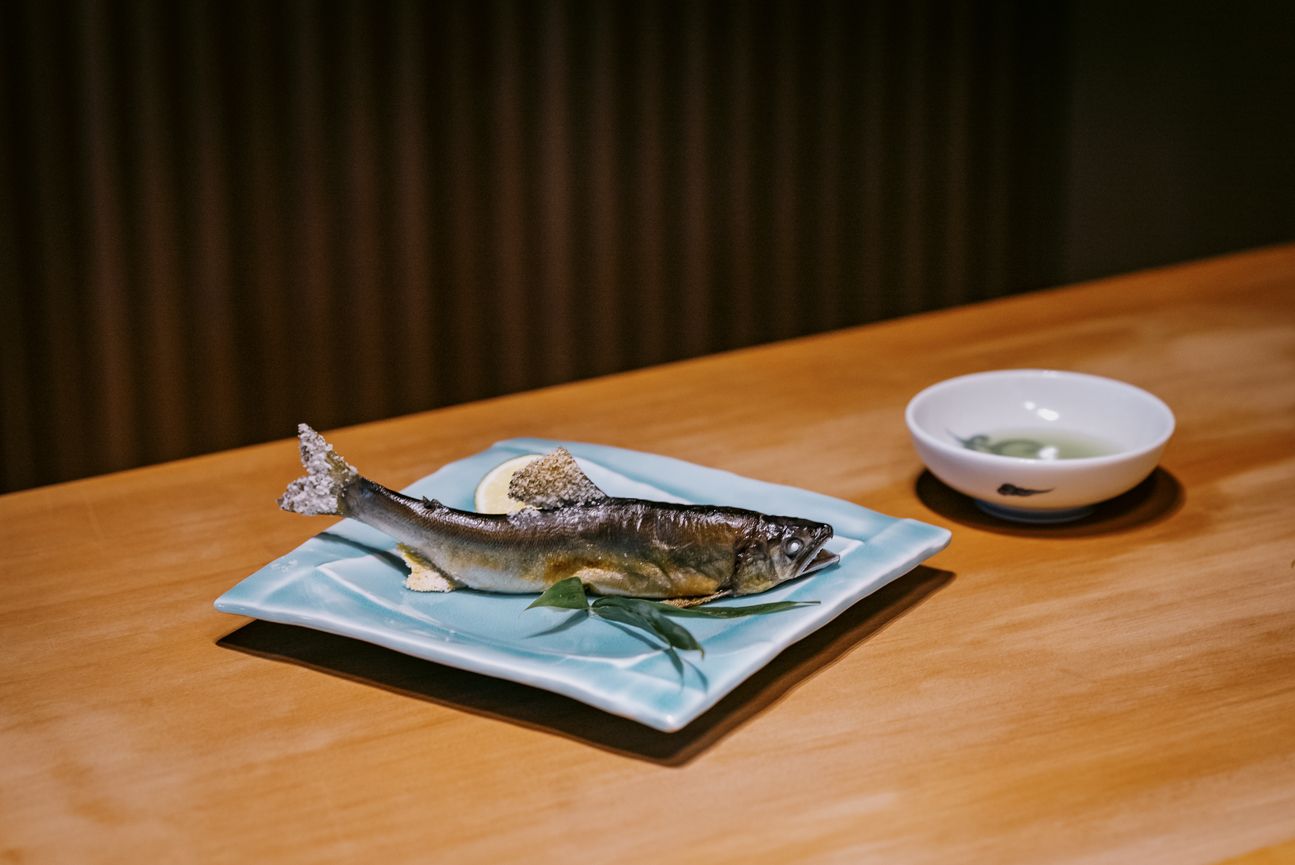
From the “Omakase (leave it to the chef)” menu, sweetfish grilled with salt. Ronnie casts his eye over the food presentation and carries out the final touches himself. The Japanese word “Omakase” has been adopted by the people, and is now established even in restaurants that are not Japanese cuisine.
“Around the year 2001, I served this to a customer who could not eat raw fish, and they were delighted”, he says, referring to Aburi sushi that is grilled on the surface with a burner. It is particularly popular overseas where there are many people with an aversion to raw fish, and nowadays can be seen everywhere, but it was Ronnie who was the first ever to add Aburi sushi to the menu. On the request of customers, he has also procured Wagyu beef, which he serves in a set menu of lavish sushi also combining ingredients such as foie gras, truffles and caviar. It has created a trend for high-class original sushi in Singapore.
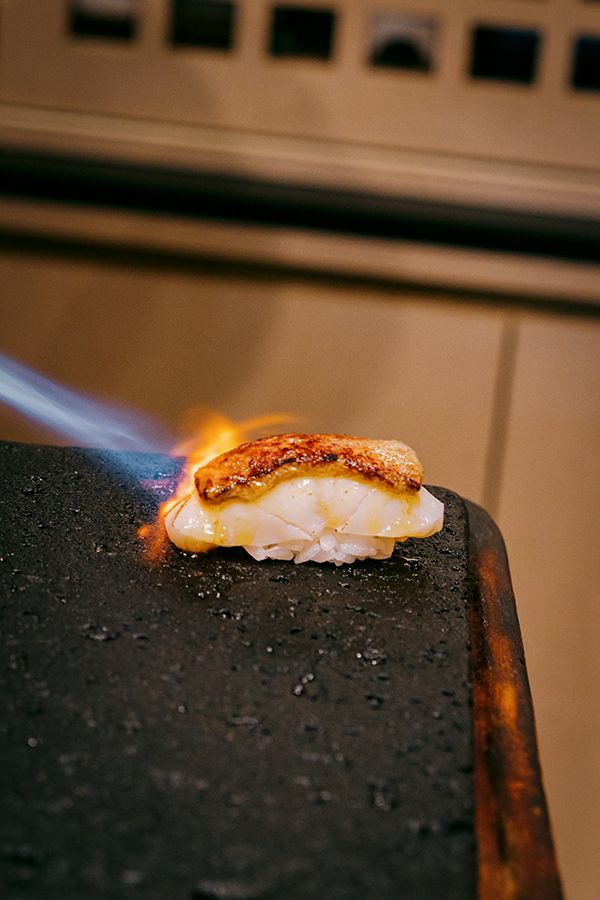
The ultimate Aburi sushi, with scallops topped with foie gras and grilled with a burner. A melt-in-the-mouth deliciousness!
Also, the small size of the rice bases is characteristic. “Uncle’s sushi were large. My rice bases are small. Because I like my customers to try many different ones”. Catering to the Singaporeans aspiring to high-class preferences, and combining foie gras with sushi, using high-class ingredients like sea urchin and abalone generously... The size of the rice bases also takes into consideration the balance with that kind of cuisine. While respecting the skills and spirit of Omotenashi hospitality inherited from Mr. Nogawa and preserving tradition and basics, he is always making things evolve by exercising his ingenuity to delight his customers. That is Ronnie’s secret to regularly drawing customers as the top-runner in the Japanese food business in Singapore.
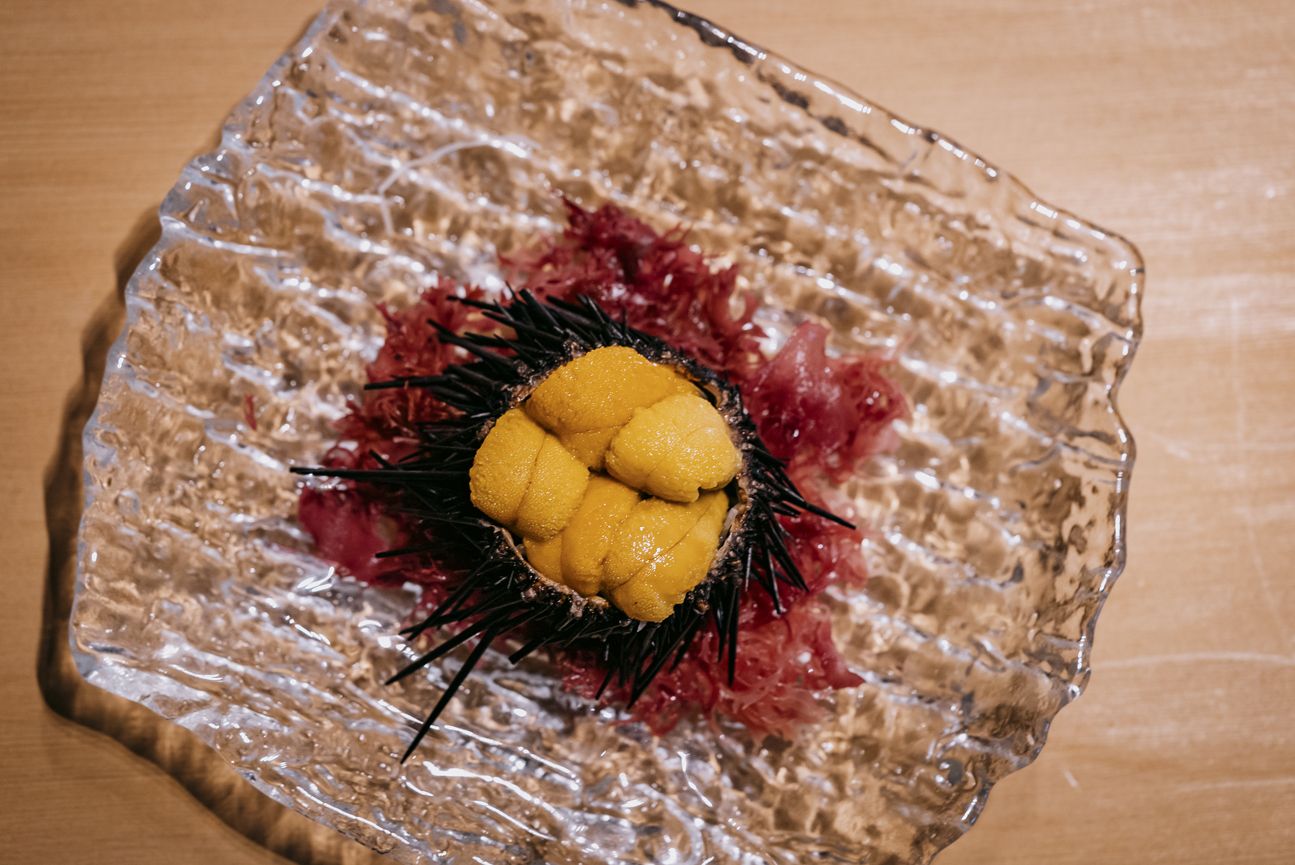
Sea urchin, served in generous portions to customers accustomed to lavish food, is very popular.
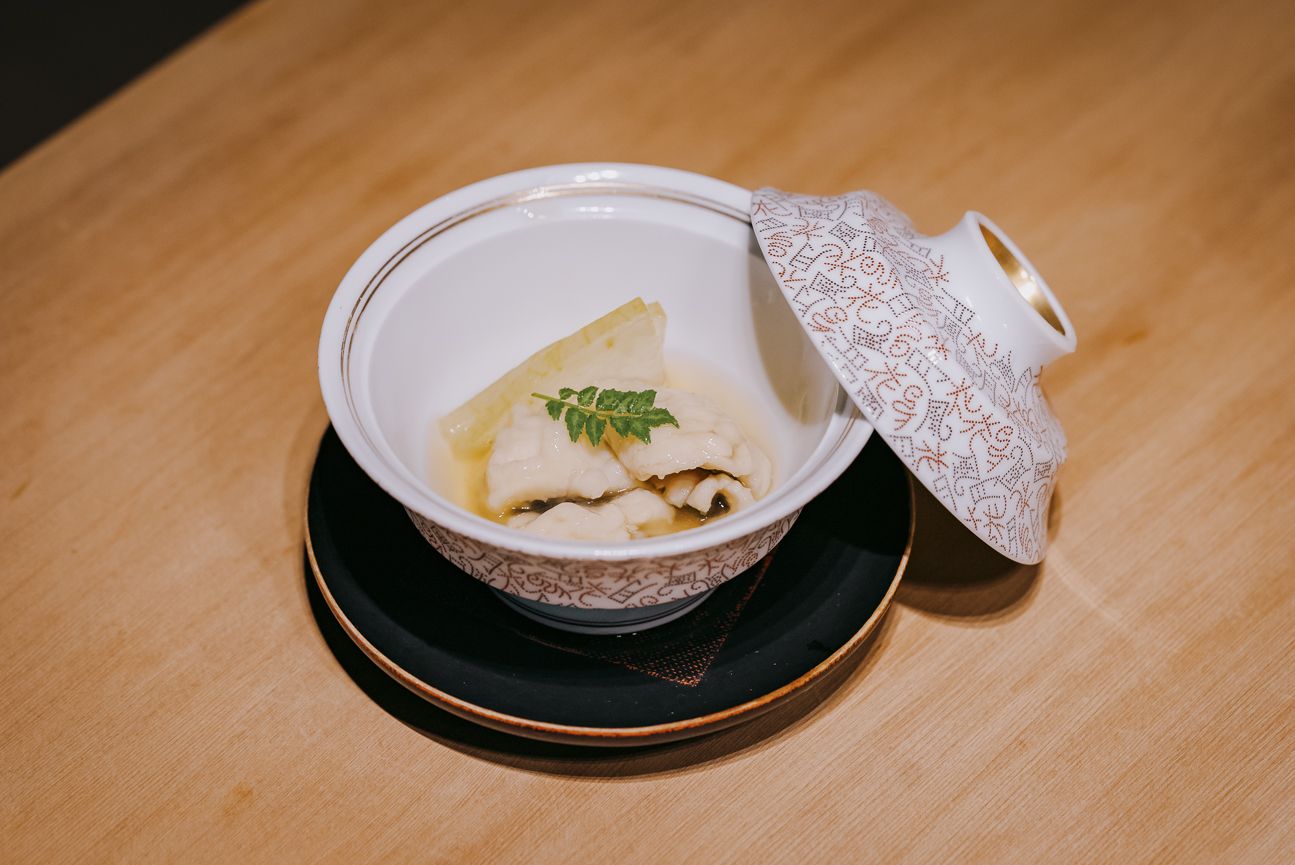
Simmered conger eel. It is characteristically “Tatsuya”, where you can savor such Japanese-like seasonal flavors.
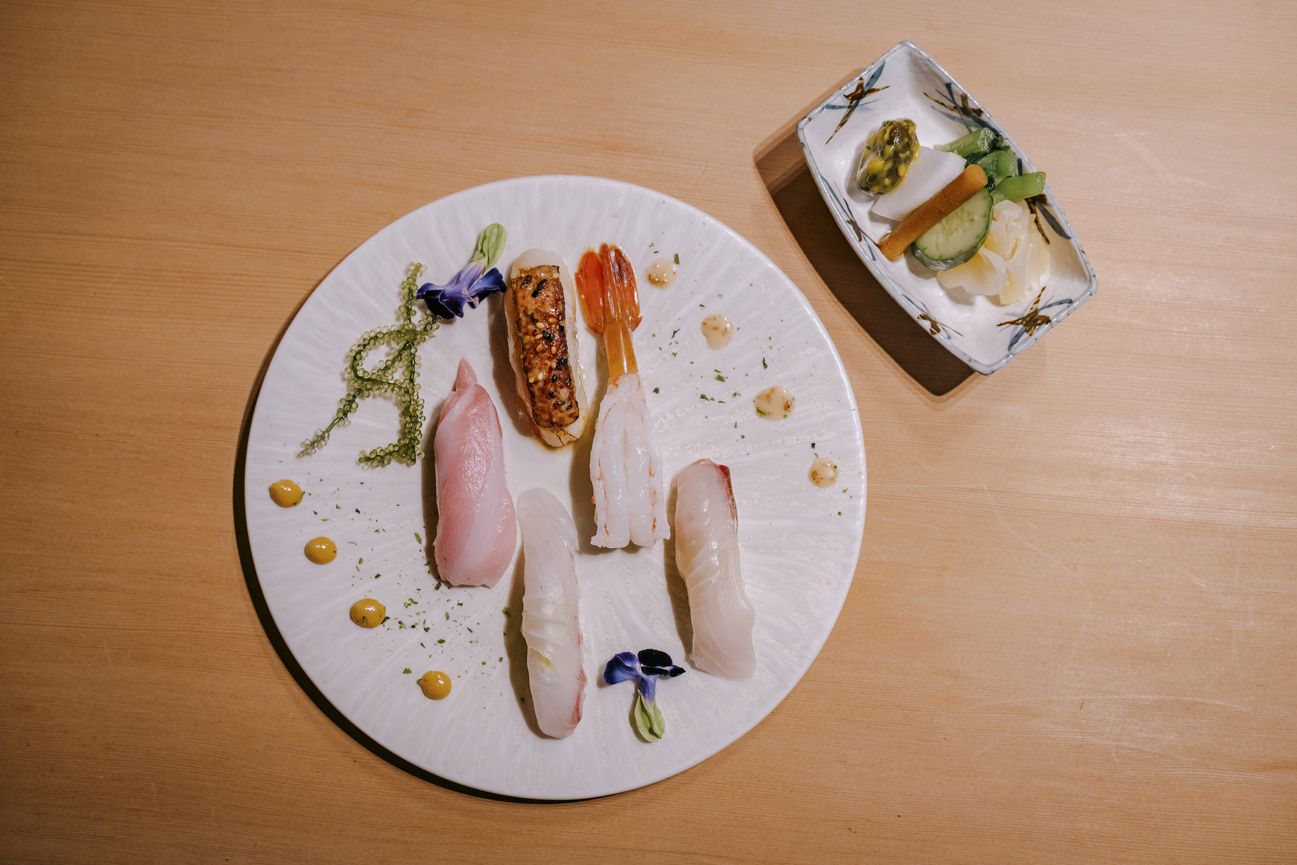
The beautifully presented small-sized sushi that Ronnie makes.

A dish of abalone and sea urchin with sweet potato chips. The tableware selected to suit the cuisine is also beautiful.
“My restaurant is a restaurant serving Japanese cuisine, so it is only natural that all the materials used are from Japan. Ingredients nurtured in the seasons of Japan are brimming with rich flavors that give a sense of the blessing of nature of each season. I thoroughly manage the quality so that those best ingredients are always served to my customers in the best condition”, says Ronnie. His uncompromising stance is enough to satisfy his regular customers who seek high-quality food.
Not only the ingredients; the wood for the counter of 200-year old Japanese cedar, chopping boards etc. is all provided by wholesalers in Shinkiba, Tokyo. The pure fragrance of Japanese cedar from the counter in use for 20 years still fills the restaurant, testimony to the wholehearted attentive care and usage by the staff.
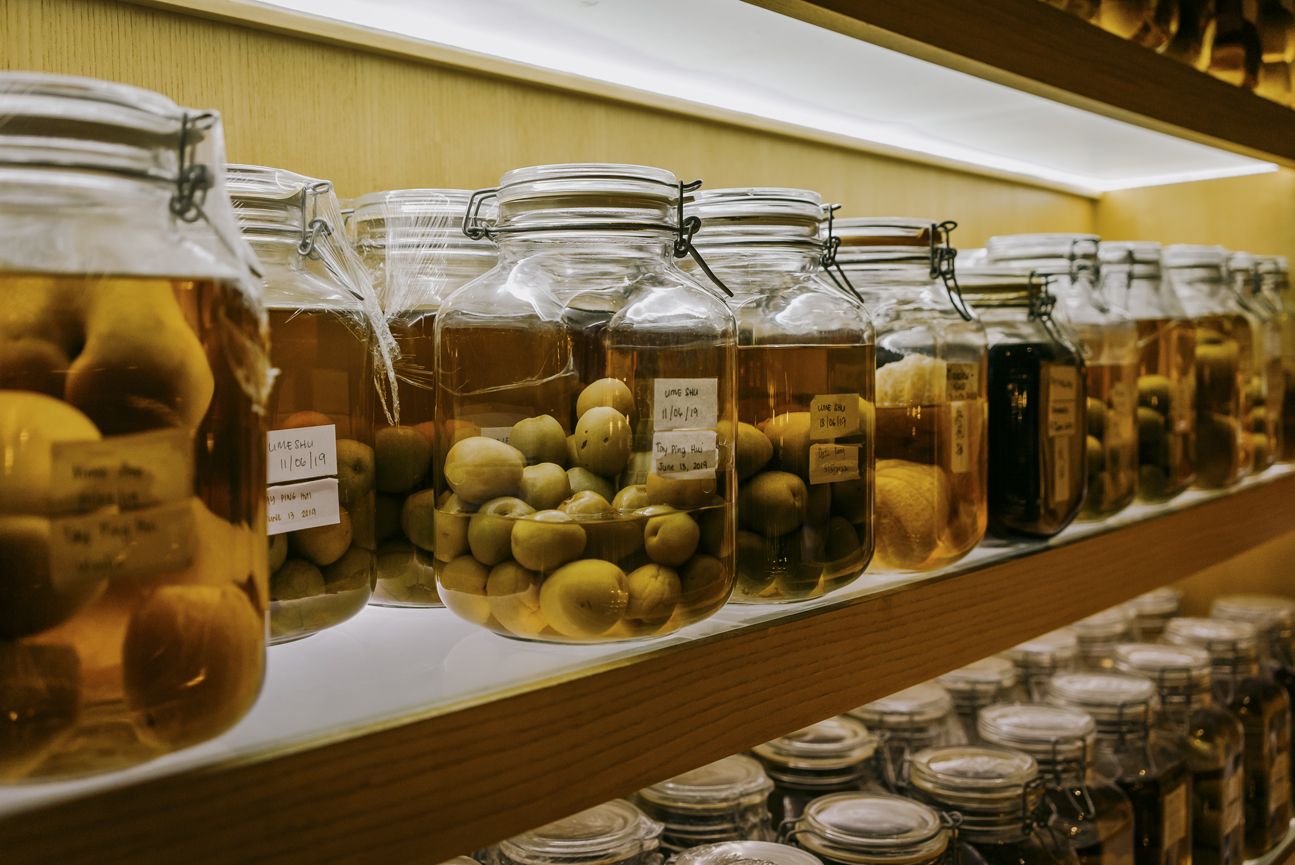
“Tatsuya”’s own-produced plum wine. Rows of bottles kept there belonging to regular customers.
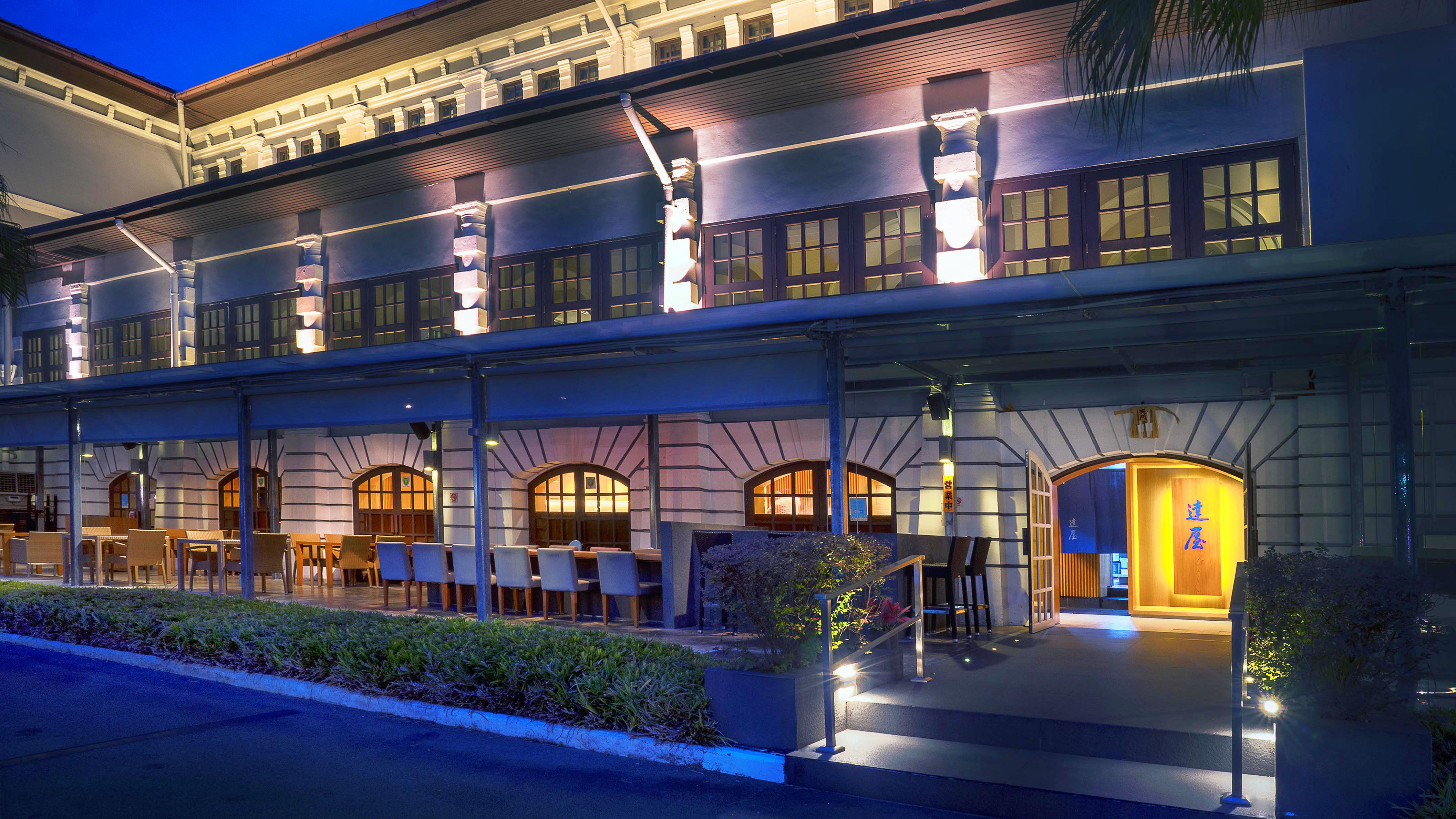
Located inside the famous Goodwood Park Hotel at the entrance of Orchard Road in the main shopping area of town.
Regular customers drawn to Ronnie are not only from Singapore itself, but gather from places like Indonesia, China and Europe, too. Without doubt, “Tatsuya” will continue to use the best Japan-produced ingredients to enchant the food connoisseurs hungry for authentic as well as new trends, and help evolve Japanese food brimming with originality.
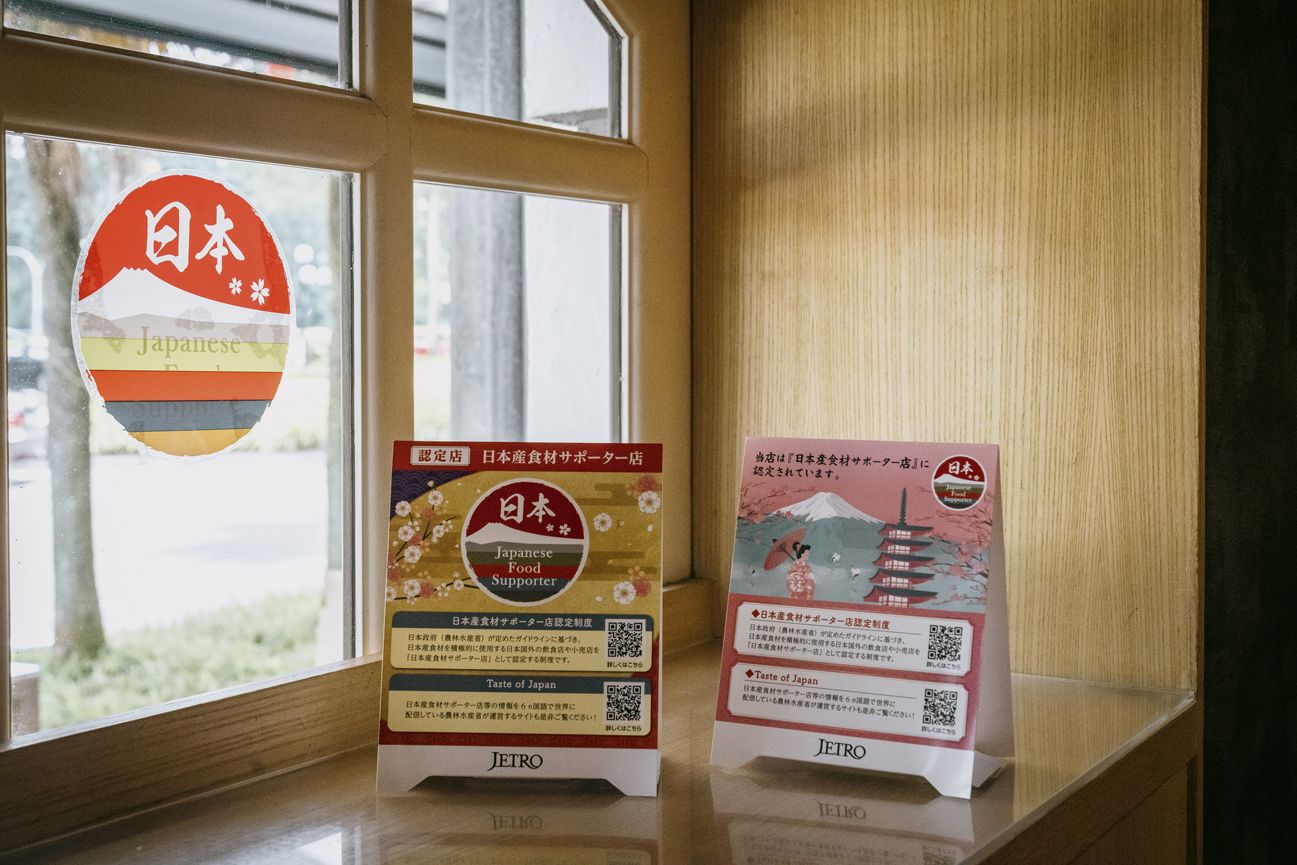
“Tatsuya”, which uses carefully selected Japan-produced ingredients, is a certified Japanese Food and Ingredient Supporter Store.
Text: Reiko Kasai; Photos: Lauryn Ishak
Tatsuya
Goodwood Park Hotel
22 Scotts Rd, Singapore 228221
Tel: +65-6887-4598
https://www.tatsuya.com.sg
/en/restaurants/detail/?id=6762

